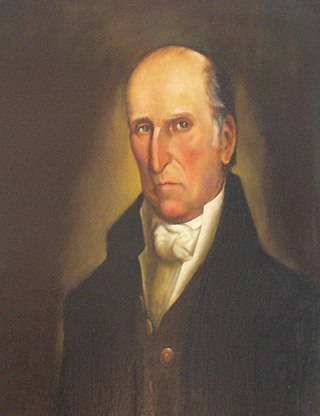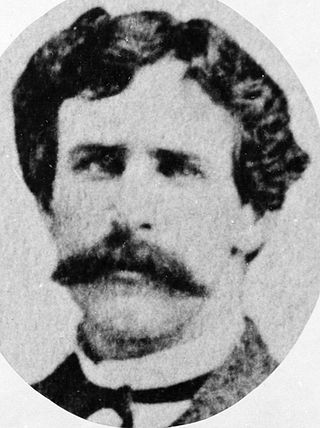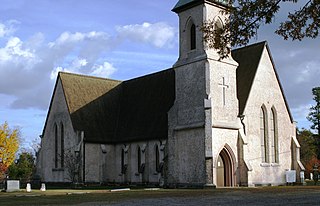This article needs additional citations for verification .(December 2021) |
Thomas Wilson was a southern American business entrepreneur and magnate. He was active from the early 1850s until his death in the early 20th century.
This article needs additional citations for verification .(December 2021) |
Thomas Wilson was a southern American business entrepreneur and magnate. He was active from the early 1850s until his death in the early 20th century.
Wilson immigrated to the United States in the 1850s from Scotland, where he had been raised by his grandfather, a Scottish laird. Although he came from an aristocratic family, Wilson had little education. He and his wife arrived in New York City with less than one pound. He hired on as an apprentice boilermaker and rose quickly along the corporate ladder.
By the end of the American Civil War, Wilson owned a chain of foundries. He and his family moved to Sumter, South Carolina and established a number of companies throughout the South.
Wilson developed the Northwestern Railroad of South Carolina [1] and later served as head of the Atlantic Coast Line Railroad, the St. Charles Hotel and the First National Bank of Sumter, among others.
By 1864 he had fathered several children, one of whom had died. He owned large swathes of land throughout the South; with especially large ones in Florida. His land holdings included all of what is now Myrtle Beach, South Carolina. By the end of his life, he was the wealthiest person in South Carolina.

Fort Sumter is a sea fort built on an artificial island protecting Charleston, South Carolina from naval invasion. Its origin dates to the War of 1812 when the British invaded Washington by sea. It was still incomplete in 1861 when the Battle of Fort Sumter began the American Civil War. It was severely damaged during the war, left in ruins, and although there was some rebuilding, the fort as conceived was never completed.

Laurens is a city in Laurens County, South Carolina, United States. The population was 9,139 at the 2010 census. It is the county seat of Laurens County.

Sumter is a city in and the county seat of Sumter County, South Carolina, United States. Known as the Sumter Metropolitan Statistical Area, the namesake county adjoins Clarendon and Lee to form the core of Sumter-Lee-Clarendon Tri-county area of South Carolina that includes three counties straddling the border of the Sandhills, Pee Dee, and Lowcountry regions. The population was 43,463 at the 2020 census.

Andrew Pickens was a militia leader in the American Revolution. A planter and slaveowner, he developed his Hopewell plantation on the east side of the Keowee River across from the Cherokee town of Isunigu (Seneca) in western South Carolina. He was elected as a member of the United States House of Representatives from western South Carolina. Several treaties with the Cherokee were negotiated and signed at his plantation of Hopewell.

James Gadsden was an American diplomat, soldier and businessman after whom the Gadsden Purchase is named, pertaining to land which the United States bought from Mexico, and which became the southern portions of Arizona and New Mexico. James Gadsden served as Adjutant General of the U.S. Army from August 13, 1821 – March 22, 1822. Between 1853 and 1856, he served as U.S. Minister to Mexico. He was known commonly as General Gadsden, although he never had a rank above colonel.

The American Civil War was the most widely covered conflict of the 19th century. The images would provide posterity with a comprehensive visual record of the war and its leading figures, and make a powerful impression on the populace. Something not generally known by the public is the fact that roughly 70% of the war's documentary photography was captured by the twin lenses of a stereo camera. The American Civil War was the first war in history whose intimate reality would be brought home to the public, not only in newspaper depictions, album cards and cartes-de-visite, but in a popular new 3D format called a "stereograph," "stereocard" or "stereoview." Millions of these cards were produced and purchased by a public eager to experience the nature of warfare in a whole new way.

James Lawrence Orr was an American diplomat and politician who served as the 22nd speaker of the United States House of Representatives from 1857 to 1859. He also served as the 73rd governor of South Carolina from 1865 to 1868 after a term in the Confederate States Senate.
Walter Gwynn was an American civil engineer and soldier who became a Virginia Provisional Army general and North Carolina militia brigadier general in the early days of the American Civil War in 1861 and subsequently a Confederate States Army colonel. He was a railroad engineer and railroad president before the Civil War, Florida Comptroller in 1863 and a civil engineer after the Civil War.

Edmund Ruffin III was a wealthy Virginia planter who served in the Virginia Senate from 1823 to 1827. In the last three decades before the American Civil War, his pro-slavery writings received more attention than his agricultural work. Ruffin, a slaveholder, staunchly advocated states' rights and slavery, arguing for secession years before the Civil War, and became a political activist with the so-called Fire-Eaters. Ruffin is given credit for "firing the first shot of the war" at the Battle of Fort Sumter in April 1861 and fought as a Confederate soldier despite his advanced age. When the war ended in Southern defeat in 1865, he committed suicide rather than submit to "Yankee rule."

Franklin Israel Moses Jr. was a South Carolina lawyer and editor who became active as a Republican politician in the state during the Reconstruction Era. He was elected to the legislature in 1868 and as governor in 1872, serving into 1874. Enemies labelled him the 'Robber Governor'.

The Battle of Fishing Creek, also called the Battle of Catawba Ford, was an American Revolutionary War battle fought on August 18, 1780, between American and British forces including the 71st Foot. It was fought near the junction of Fishing Creek and the Catawba River in South Carolina. British forces under Banastre Tarleton surprised the militia company of Thomas Sumter, killing a significant number, taking about 300 captives, and very nearly capturing Sumter, who some say was asleep at the time of the attack.

Robert Smalls was an American politician, publisher, businessman, and maritime pilot. Born into slavery in Beaufort, South Carolina, he freed himself, his crew, and their families during the American Civil War by commandeering a Confederate transport ship, CSS Planter, in Charleston harbor, on May 13, 1862, and sailing it from Confederate-controlled waters of the harbor to the U.S. blockade that surrounded it. He then piloted the ship to the Union-controlled enclave in Beaufort–Port Royal–Hilton Head area, where it became a Union warship. His example and persuasion helped convince President Abraham Lincoln to accept African-American soldiers into the Union Army.
Franklin J. Moses Sr. was an attorney, planter, politician and judge in South Carolina. He served as a state senator from 1841 to 1866, when he was elected to the circuit court. He was elected as Chief Justice of the State Supreme Court in 1868 during the Reconstruction era. In 1876 he was asked to rule on a challenge to election returns in the hotly disputed gubernatorial campaign, eventually won by Democrat Wade Hampton and ending Republican domination in the state.

The Church of the Holy Cross is a historic Anglican church at 335 North Kings Highway in Stateburg, South Carolina. Built in 1850-52 to a design by noted South Carolina architect Edward C. Jones, it is a notable example of rammed earth construction with relatively high style Gothic Revival styling. It was designated a National Historic Landmark for its architecture in 1973.
The Battle of Rocky Mount took place on August 1, 1780 as part of the American Revolutionary War. 600 Loyalists commanded by Lieutenant Colonel George Turnbull occupying an outpost in northern South Carolina withstood an attack by 300 American Patriots led by Colonel Thomas Sumter.
The Battle of Hanging Rock was a battle in the American Revolutionary War that occurred between the American Patriots and the British. It was part of a campaign by militia General Thomas Sumter to harass or destroy British outposts in the South Carolina back-country that had been established after the fall of Charleston in May 1780.

The High Hills of Santee, sometimes known as the High Hills of the Santee, is a long, narrow hilly region in the western part of Sumter County, South Carolina. It has been called "one of the state's most famous areas". The High Hills of Santee region lies north of the Santee River and east of the Wateree River, one of the two rivers that join to form the Santee. It extends north almost to the Kershaw county line and northeasterly to include the former summer resort town of Bradford Springs. Since 1902 the town has been included in Lee County.

Inner Harbor East, now more recently referred to more commonly as simply as Harbor East, is a relatively new mixed-use development project in Baltimore, Maryland, United States along the northern shoreline of the Northwest Branch of the Patapsco River, which is the Baltimore Harbor, and its Inner Harbor. Major tenants of Harbor East include the Baltimore Marriott Waterfront Hotel on Aliceanna Street, between the Waterfront Promenade on the west and to the east is the President Street Boulevard and the Katyn Forest Massacre Memorial (monument) in the International Drive circle at the south end.. Also, the new Legg Mason Tower, in which the famous financial services firm moved from the central downtown is located across the street. A Four Seasons Hotel opened in November 2011.
The Turks of South Carolina also known as Sumter Turks, or Turks of Sumter County, are a group of people who have lived in the general area of Sumter County, South Carolina, since the late 18th century. According to Professor Glen Browder "they have always been a tight-knit and isolated community of people who identified as being of Turkish descent".
William Ellison Jr., born April Ellison, was a U.S. cotton gin maker and blacksmith in South Carolina, and former African-American slave who achieved considerable success as a slaveowner before the American Civil War. He eventually became a major planter and one of the medium property owners, and one of the wealthiest property owners in the state. According to the 1860 census, he owned up to 68 black slaves, making him the largest of the 171 black slaveholders in South Carolina. He held 63 slaves at his death and more than 900 acres (360 ha) of land. From 1830 to 1865 he and his sons were the only free blacks in Sumter County, South Carolina to own slaves. The county was largely devoted to cotton plantations, and the majority population were slaves.